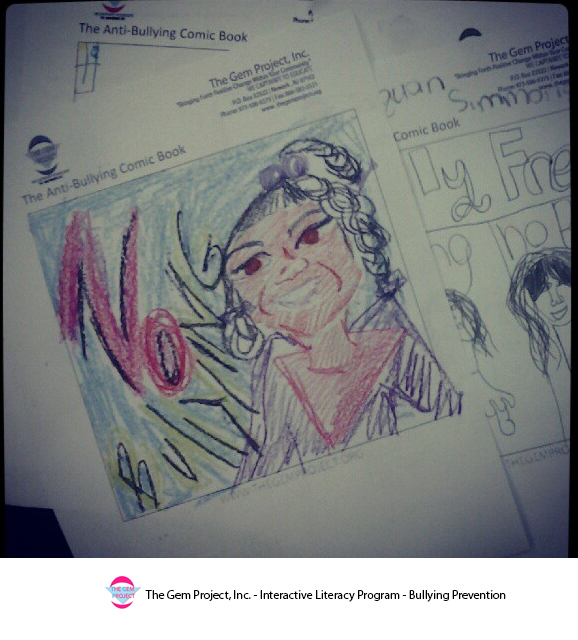
Overview: Bullying is more relevant now than it has ever been. With technology advancing, new issues are rising and becoming more problematic. Cyber-bullying is increasing because of the infinite resources the internet provides. Social networking sites give a wide platform and anonymity for those who bully. The attackers are able to fuel their agenda beyond the school grounds and place of work.
It’s a 24/7 ordeal for many youth and young adults. The Gem Project was able to visit many of our participating sites, holding bullying prevention workshops with youth at local libraries and/or youth centers through our interactive literacy programs.
Here is Weequahic Branch Library’s review: The Gem project spoke with students from the following schools: George Washington Carver, Madison Ave., Gray Charter School and North Star Academy. We had planned to go through an Am I bullied? worksheet and held a discussion on the different types of bullying. We spoke with each student individually on whether or they’ve been bullied– or were the ones who bullied.

Site notes:
- One student admitted to bullying someone in the past and were also targeted by others who bullied later.
- Youth reported: If you pick on a bully, it will make you a bully too.
- Youth as young as age 7 reported, “You can go to jail for that (bullying), when talking about a recent event that they saw on the news about a ‘bully target’ committing suicide, by jumping off the George Washington bridge to the Gem Project activity leader.
- Students spoke about a television show called Timmy Turner, which airs on the Cartoon Network. They highlighted a situation where one of the characters was bullied by Vicky, a character on the show. They described a scene where Vicky cyber-bullied Timmy by making negative remarks about him online.
The instruction: In a spider web diagram, Gem Project activity leaders marked off the different meanings of bullying and its types. We gathered data from every student who participated. Students gave their own interpretations as to why aggressors bullied and why bully targets (a word we replaced for victim) were so susceptible to their attacks. Diagrams were arranged as follows:
- Bully –> Why –> Solution
- Bully Target –> Why –> Solution
- Cyber-Bullying –> Why –> Solution
- “Torments and pushes people around” “Think they’re cool, but they’re not” “bad for themselves”
- “Only bully because they feel bad” “jealous” “wants revenge”
- “Avoid/ignore the bully” “Tell an adult or someone who can fix the problem” “Teach the bully about the effects of his/her attacks” “stand up to bullies to change their mind”
- “unique, special” “different from the crowd” “too nice”
- “they’re special, unique or talented” “different”
- *One of the student’s who was bullied suggested to change schools, although, this is not always feasible
- “Hang in crowds/ groups”
- “Speak up, tell someone of authority” “report it”
- “attack someone online on the internet” “When someone puts something embarrassing about someone online” “tormenting someone through text-messaging”
- “It’s away for the attacker to feel good/ better about themselves” “The attacker does it so a lot more people can see it”
- “Report it online” “Copy the evidence and tell someone” “Avoid certain outlets where the bullying is take place online”


